India
My Indian Attachment

They came, they saw and they were conquered........
|
The brilliant green eyes of the Goddess Parvati are startlingly beautiful; the goddess Lakshmi, with very South American features and stylish dress, stands on a lotus, her arms extended. And the mighty God Vishnu? He is powerful – and female. The images are the creation of the fevered imagination of Roberto Custodio, a Brazilian artist who has never visited India – except in his dreams.
But he believes he’s walked the land, in a past birth. “When I was a teenager I saw a postcard with an image of Krishna,” says Custodio. “His kindness and light fascinated me. Since then I started to read everything that I could about Hinduism. The Indian classical music is for me the most complete translation of the superior spheres.” Custodio, whose series of Hindu gods and goddesses is created painstakingly through intricate collages of cutup magazine material, showed his work in the United States at the Peter Louis Gallery in Manhattan. He lives and works in Brazil, but has this inexplicable connection with India. He feels linked enough to it to interpret the gods and goddesses through his own eyes. He says, “I don’t follow any particular religion, but Hinduism and the people from India touch my soul as if I have really lived there in a past life.” Indeed, what is it about India that touches the soul of all those who step on its soil, from President Bill Clinton to Bill and Melinda Gates to Debra Winger and George Harrison? Legions of rock stars and celebrities, writers and artists, not to mention truth seekers and dreamers and peace corps workers have searched India for varied things and almost always found what they were yearning for.
Unlike the invaders and colonizers of past centuries, these new travelers come sword-less and in peace. They come not to conquer, but to be conquered by a land that is thousands of years old, wise and all knowing, and yet as new and vibrant as a babe. The seekers come for redemption and for renewal, for rest and for recreation, to outsource, to find new markets, to search for new fabrics and for new inspiration. And sometimes, they come to solve the world’s problems, because India is a fertile experimental lab: it is so huge and its population so vast that if there is a problem anywhere in the world, it’s bound to echo in India. Take President Bill Clinton, for whom it seems to have been love at first sight with the people and places of India. Who can forget that image of Clinton being showered with rose petals in a traditional ceremony by smiling village women in Naila? It captured the exuberance of Indian welcomes and the joy of those on the receiving end. As recently as this year Clinton’s been to Goa, which he just loved. While Clinton has been a wonderful tourist – bestowing that famous charismatic smile as he rode on an elephant, traveled with daughter Chelsea to the Taj Mahal and gave his gourmet stamp of approval on the finger licking cuisine of Bukhara at the Maurya Sheraton – he also has developed a deep commitment to India and his work there has had far-reaching consequences.
Of particular import to Indian Americans, Clinton was the principal mover behind the American India Foundation (AIF), which he helped jumpstart. Today the organization, headed by some of the most powerful NRIs, is a leading international development organization working toward accelerating social and economic change in India. By mobilizing people and resources across the United States, AIF has raised over $30 million since its inception in 2001. It awards grants for education, livelihood and public health projects in India, especially elementary education, women’s empowerment and HIV/AIDS. “The starting point was when President Clinton left the White House on January 21, 2001 and the earthquake in Gujarat happened on the 26th,” recalls Pradeep Kashyap, executive director of AIF. “Clinton had struck up a personal rapport with Prime Minister Vajpayee and asked him how he could help. Vajpayee asked him to connect with the Indian American community and be a catalyst in pulling them together so that they could help in the reconstruction work which was going to be long-drawn.” It turned out to be one of Clinton’s defining tasks after leaving the presidency and shaped his subsequent ex president public persona as an advocate for disaster relief on an international scale, from Katrina to the Tsunami, much as Habitat for Humanity and world peace efforts came to define former president Jimmy Carter.
Clinton made a number of calls, the culmination of which was a lunch that Citibank CEO Victor Menezes hosted at Citibank for senior level Indian Americans from New York and Silicon Valley. Clinton made a pitch for bringing a focus to the fundraising for the rehabilitation work and urged Indian Americans to take a leadership role. He made a personal commitment to the fundraising effort and several high profile events followed, including one in Silicon Valley that raised over $3 million. Major Indian American players, the crème de la crème of Silicon Valley, heeded Clinton’s call and came together. Subsequently, AIF was formed to channel the funds to Gujarat, with Menezes and McKinsey Managing Director Rajat Gupta as co-chairs and President Clinton as honorary chairman. Several other major fundraisers followed, including one at the Regency Hotel on Wall Street, where Clinton spoke eloquently and animatedly mixed with the 1,000-plus crowd to raise awareness for the Gujarat earthquake. Clinton rallied powerful Indian Americans from Vinod Dham, a key architect of the pentium processor and Vinod Khosla, one of the country’s leading venture capitalists, to Lata Krishnan, co-founder of SMART Modular Technologies. “I remember President Clinton was quite involved and he remains committed besides the work he does for global initiatives and his foundation,” says Kashyap. “He is still the honorary chairman and still does a lot of letter writing on the behalf of AIF. We do a bi-weekly report to his office.”
The silver Ganesha he keeps on his desk symbolizes Clinton’s closeness to India. Says Kashyap: “I visited his office many times and I remember I teased him, ‘So President Clinton, you got the Ganesha out because all the Indians were coming?’ He laughed, ‘Oh, no, don’t say that! I have it all the time.’ And sure enough, I must have visited his office probably 3-4 times, the Ganesha was always there. He said to me, ‘Look, this is the Lord of Wisdom. I have it all the time!'” As AIF continues to grow and evolve, Kashyap says Clinton has been a catalyst: “Without a doubt, we would not have the credible platform that we have today were it not for President Clinton’s personal involvement in cheering and pushing us to getting where we are.” While Clinton’s visits to India have been high profile, major events, the visits of countless other Indophiles occur quietly, on the backroads and byways of an India that even many Indians rarely see. Debra Winger, the noted actress of such films as An Officer and a Gentleman and Terms of Endearment has been smitten badly by India. “My first trip to India was in January of this year, but it was the culmination of a lot of events. I had the ticket to India in my hands twice in my life so you can imagine that finally being able to go was quite an event for me,” says Winger. What attracted her to India? “I had wanted to go since I was a teenager. In the late 1960s in Los Angeles, the Indian culture was coming so big into our lives, because we were learning about Eastern philosophy, we were learning about yoga, we were changing our diets, and so many of us were becoming vegetarian. There were so many influences, as you know, from the clothes we were wearing to the incense we were burning. Everything seemed to be from India. “It was a big influence on our generation at that time. A lot of people were turning spiritually to India to make some sense out of things. What we were being handed to us wasn’t working for us any more. It was a cultural phenomenon that was happening. People were reading philosophies and people were coming back from being in ashrams, and they were bringing good ideas back.”
Even after purchasing an airline ticket, she never went. She recalls, “I was very young and I honestly just got frightened. I was going to backpack and I thought I’d never come home. I thought I’ll just go there and just change my life and never return and some part of me didn’t want that to happen. I knew myself and knew I get captivated with things.” So by the time she actually went, decades later, she was really looking forward to the experience. “It was really time. I remembered an important thing about life and about traveling for me, which is it’s always better to go with a purpose. I’m not a very good tourist or a good vacationer. The fact that I finally got to go to India with a very strong purpose made it a very meaningful trip.” The strong purpose that propelled her to India was her work with Sightsavers International, an organization based in the United Kingdom. Globally, India has the highest percentage of blind people, but according to the organization the blindness rate has been reduced 25 percent from 1990 to 2002. In its battle with avoidable blindness India has developed some of the most sophisticated eye care hospitals in the world. According to Sightsavers, doctors travel from Europe and the United States to these hospitals to see the amazing systems that enable surgeons to perform up to 60 cataract operations a day. Winger herself had once been temporarily blind after an accident many years ago and felt it was logical to help out: “I was going to go out in the world and try and understand the domino effect of blindness in developing countries. To me, the real work is in stopping this domino effect, because when someone goes blind, everyone around them is affected in really, really dramatic ways, especially in India where you have multi-generational families.” Winger traveled to Delhi, Rajasthan, Calcutta and the Sunderabans, and met real people who had been affected by blindness and the caseworkers who helped them through Sightsavers: “They are just my heroes and they are the most amazing people.” She traveled to way out villages and inner cities, documenting stories of the organization’s work with the elderly and the poor. India more than lived up to its hype for Winger. She says, “I found the Sunderbans to be an intense experience. It remains a very mystical place, more so than a lot of places that are more traveled. There’s such a connection with the essence of life. Once you’re on a boat on a Ganges tributary in a crocodile infested area and you realize you can’t go on either side of the land, because you’re in a tiger preserve. You feel like you’re living in the middle of a Zen parable – the crocodile and the tiger – and to have that experience in my life, I’m very grateful.” Winger also experienced a deep connection with people. She says, “I just can’t wait to go back. I have a real affection for the people, but you know I had a great affection for India even before I went there.” The India of the 1960s had seemed far away and exotic, but Winger found India pretty exotic even in its regularity.
She adds: “I think there’s a connection with spirituality that we don’t have here and that goes a long way with me. Also there is a generosity and a welcoming feeling that I think is part of Indian tradition. It is very warm. I’m not sure America has that, not the press of humanity that you feel in India. You’re surrounded and you’re laughing within five minutes. I mean, here if you walk into a community, you’re lucky if someone opens their door for you!” Although Winger is not vegetarian, she has developed a taste for meatless food and is almost having withdrawal symptoms: “I was never hungry or thirsty for five minutes. I liked everything I ate and I just ate like a horse the whole time I was there. I’m completely addicted to daal. I was so depressed when I got home and didn’t have daal every day.” While Winger took just a short trip to India, the English writer, journalist and filmmaker Justine Hardy has spent much of the past 12 years there. The author of such books as The Ochre Border, Goat, Bollywood Boy and Wonder House, she’s become a desi at heart, and can even speak some Hindi. Her connections to India are rooted in family. A cousin married into a Bihari family when Hardy was a child: “As you can imagine the notion of Indian-relations-by-marriage seemed vastly romantic to a five year old – wild images of elephants, mountains, marble palaces, the whole gamut of what India meant to me at that age. And then I began to go there with my mother and all that India really is began to seep into me at that very impressionable age.” In her 17 years in India she’s worked for several newspapers, including The Indian Express, as well as the BBC and traveled all over the country, including Kashmir, which has a special place in her heart. “What is without question is that India has been the greatest teacher I can imagine. She has shaped so much of who I am today and indeed the enormity of all that she is has shaped my writing at a very profound level.” Asked if her idea of India has changed over the years, she says: “The impressions of a five year old and a 40 year old are very different – elephants and spangles versus Vedanta and traffic chaos. But then there have been some consistencies all along: the sheer tidal weight of the place that hits you every time you get back, how your internal timer has to shift into what people joke about as Indian Standard Time – or to be more precise, the mentality of jo hona hai hoga. And now this very way of life is being challenged by India’s arrival at the international big boys’ table.” A recurring discovery for travelers is the way India seeps into one’s soul and becomes a part of life for many visitors to the sub-continent. As Hardy notes, “India seems programed into my DNA now and I often dream of it when I am not there, and find myself wandering after scents that remind me of it when I am away – the good ones, of course, as against some of the less fragrant ones that are all part of the deal of Bharat.” Hardy’s friends tell her she speaks Hindi like a taxi-walla and she’s secretly quite proud of that fact. Ask her about her favorite food and she says, “How can you beat dhokla and cool pudina chatni on a hot night with the smell of raat-ki-rani in the air?”
British rajas and ranis have, of course, a long connection with India, but none quite like Prince Charles. For the prince, India and Hinduism have always held a deep fascination and he’s visited several Hindu temples and Sikh gurudwaras in the Unitd Kingdom and also expressed a desire to change the title of the future king from “defender of the faith” to “defender of faith.” Simultaneously idiosyncratic and pragmatic, he is drawn to India’s ordinary people. At his grand wedding to Camilla Parker Bowles invited guests included two dabbawallas from Mumbai! On an earlier visit he had shown a keen interest in the 5,000 tiffin carriers of the metropolis who deliver 175,000 lunch boxes, rain or shine, every day. He had chatted with them and two years later when he was all set to walk the aisle with Camilla, he sent all-expenses paid wedding invitations to Raghunath Medge, president of the Nutan Mumbai Tiffin Box Suppliers Association, and Sopan Mare, the secretary. The delighted dabbawallas conducted a special puja for the couple and the two guests, who don’t speak English, headed out bearing a traditional headdress and sari as wedding gifts. “It is a noble gesture on his part as we are poor, hard-working people and never ever imagined to be part of such a grand royal wedding,” Medge told the media. In this case, life handed a free lunch to the dabbawallas! Recently Prince Charles and Camilla were in India, reaffirming that it was a country they love and want to revisit again and again. Charles was quoted as saying, “I love coming to India. It is emotional.” When he was asked what he found most exciting about India, his answer was simple and said it all: “The Indian people.” During this private visit, the couple went to Punjab, Haryana and Rajasthan, visiting small villages and meeting with ordinary people, farmers, craftspeople as well as business bigwigs. They viewed water conservation efforts and organic farming initiatives, projects close to the prince’s heart. They also prayed at the Anandpur Sahib Gurdwara, barefoot and with their heads covered. India has also impacted the world’s richest couple, Bill and Melinda Gates, and they in turn are impacting India in huge and very beneficial ways. In India, it seems, Gates’ twin passions of technology and public policy have come together. At the 50th anniversary of the Indian Institutes of Technology in California, Bill Gates pointed out that Microsoft had given over $7.5 million in grants to IITs, more than any other organization outside the United States or the United Kingdom and noting that Microsoft had hired thousands of Indian graduates, including hundreds from the IITs. “IIT and Microsoft do have a lot in common, an optimism about the future, a belief that fundamental science will lead to breakthroughs that will let us solve some of the toughest problems that mankind faces, a belief that we can provide better tools than ever before and that we’ve really just scratched the surface” Gates’ passion for public policy and making a dramatic difference in the world has taken him back to India. The Bill & Melinda Gates Foundation has committed $200 million to prevent the spread of HIV in India through its India AIDS initiative, Avahan, whose prevention programs are focused on those most at risk of contracting and spreading HIV. “For myself, in terms of the really outsized luck I’ve had financially,” says Gates, “It’s a pretty large responsibility and it’s one that I put a lot of energy into thinking about and it’s really only in the last five years that in my foundation I’ve really tried to say how can I give these resources that I’m lucky enough to have back to society in a way that can make an impact.” Talking about the threat of an AIDS epidemic, he says, “I feel privileged to have been able to hopefully cast a little bit of energy on that, put some resources into it and hopefully stop what could be a very bad development and really slow down India’s ability to realize its incredible potential.”
While the couple rarely speaks about the emotional or personal aspects of their India efforts, those who have seen them in action are in awe of their humanity and commitment. Melinda Gates, especially, becomes involved in the lives of the marginalized people she has visited in India, sitting on the floor in slums, laughing and singing a civil rights anthem with the poorest of the poor and making a real effort to enter their world. Dr. Sundar Sundararaman, a mentor with Mysore and Mandya Direct Intervention, told the Christian Science Monitor after observing her genuine interactions with those affected by AIDS, “As an onlooker, I was taken aback. She was engaged in asking very specific questions about whether this project was touching their lives. There was a natural person in her, an individual who connects with people.” He added that what sets her apart is that she responds to need in a way that is personal and direct: “That simplicity is what is inside her.” As Bill Gates moves from being the world’s technology icon to world’s leading philanthropist, his future seems increasingly linked to India’s through his foundation’s global health initiatives. For the world’s richest man turning into its philanthropist in chief – what better canvas than India? From vaccinations for infants to multi-pronged AIDS treatment, India is that huge dramatic landscape where one can see gratifying results in sheer numbers and human capital. Not surprisingly India is the largest single foreign recipient of the foundation’s largesse and the only country outside the United States where it has established an office. Visitors come to India for many reasons and in many seasons, but perhaps the largest group are on spiritual quests to find answers to the enigmas of life. Indian gurus and ashrams have seen many devotees from the West and the line stretches all the way from the Beatles to Sting to Madonna. The fact that the Dalai Lama is stationed in Dharamsala has also drawn many high profile Buddhists and Tibet sympathizers, such as Richard Gere and Goldie Hawn to India. Hawn, who describes herself as a Jewish Buddhist is deep into yoga and meditation, which she does in her “India Room.” Of all the rock stars and celebrities who set out for India in quest of spirituality, perhaps the most engrossed was George Harrison. He is credited with bringing Hinduism and the Maharishi Mahesh Yogi to the West. He and the Beatles introduced Ravi Shankar’s sitar and Hindu chants to western pop music and Harrison himself became a serious devotee of the International Society for Krishna Consciousness. Harrison was already the rage of the music world when Joshua M. Greene, an American student at the Sorbonne in Paris, went to London for his Christmas holidays. The year was 1969 and Greene visited a Radha Krishna temple in London where the devotees asked him, an organ player, to join them at the Apple Studios in singing devotional hymns and mantras with their friend George. “For a 19 year old in 1969 to be in the company of a Beatle recording at Apple studios, I mean, never mind finding God, here was a Beatle!” recalls Greene, now an established author, documentary filmmaker and teacher. “So it was a very heady experience and so probably good fortune was part of my initial connection with India.” Over the following months, when the album of Krishna chants was released, Greene found himself “touring nightclubs and concerts all over Europe and chanting the Krishna mantras under some very unusual circumstances. All that made for a exotic encounter with India.” “I think George felt that way too. That’s why so many of his songs were about the spirituality of India,” says Greene, who is the author of Here Comes the Sun: the Spiritual and Musical Journey of George Harrison: “His album Dark Horse practically takes a melody he learnt in Vrindavan – “Jai Radhe, Jai Radhe Radhey, Jai Sri Radhe” – and put it on his album.” The 1969 “Hare Krishna Mantra,” a Sanskrit prayer set to a Ringo drumbeat, sold 60,000 copies on the very first day. While all the Beatles were inspired by India, Harrison was clearly the one who went deepest into traditional Indian practices. He read the works of Paramahansa Yogananda and Swami Vivekanand and in 1970 purchased an estate for use as a Krishna retreat and today Bhaktivedanta Manor is one of England’s most popular Hindu temples.
Says Greene, “To my mind he’s one of the great emissaries of India’s spiritual culture. Remember that when he was singing and talking of India and the great depths of wisdom and beauty of India, this was the mid-60s. You could have opened any newspaper in America and you would not have found one advertisement for a yoga class. It just didn’t exist. People looked at him as if he was going off the deep end. Today it’s mainstream. You can’t go to any city in the country without seeing yoga classes and concerts of Indian music and vegetarian restaurants.” It was Harrison who invited the other Beatles to visit India. He had been with Ravi Shankar to Bombay and Kashmir and then took the Beatles to Rishikesh. Greene adds, “The Beatles went to India and that changed everything, because they were the Bards of the era. And what they did people examined closely for its meaning. From a poor third world country India was now looked upon as a place of tremendous cultural and spiritual wealth – a place that can set a example for the world in what the Bhagwad Gita describes as seeing all living life as divine – and that is the gift of India to the world.” Before John Lennon died so tragically, Harrison went to visit him and found hundreds of CDs of Indian music stacked up in his home. As for Ringo Starr, Harrison always said, “Never underestimate Ringo; he could be a yogi disguised as a drummer.” Paul McCartney, of course has been meditating for over 20 years and is a leading advocate of vegetarianism and peace. While the Beatles’s fascination with India is well known, there were hundreds of nameless, unknown Westerners from that era who tried to find themselves in India. Many later left the ashrams and rejoined mainstream life in America, but the impact of their India encounter remained. Greene, who had joined the Hare Krishna movement in London, was introduced to India through their chants and devotion. He, like countless other young people, was inducted by Bhaktivedanta Swami Prabhupada and stayed in Krishna temples for 13 years, including trips to India. In those early days he remembers a very different India with rustic pilgrimage spots with hardly any cars. “Going to India was very much like going to another planet almost. Everything was so different. You could not turn any place without seeing some reminder of divinity – Krishna Bicycle Repair Shop or Vishnu Sweet Shop. Now everywhere there are hi-rises, telephone towers and industrial complexes. It was quite perplexing to see the impact of globalization and modernity and what’s its done to the experience of pilgrimage in India.” The Indian connection continues over generations. Last November Greene’s son, an airline pilot, was married in a Hindu ceremony in the courtyard of the Radha Damodar Temple in Vrindaban to an Indian woman he had met over the Internet, and they have a Krishna shrine in their home in Savannah, Ga. Says Greene, “India to me is like coming home. It is going back to the birthplace of Lord Krishna, it is going back to the place of the origin of the Vedas, it is going back to the land of spirituality. In spite of all the modernization, I still feel I am somehow connecting with this ancient culture that has so much to offer to the world.” While many Indophiles come to India, some are actually born there. New Yorker Peter Louis, who is Greek American, was born in Bangalore where his father was manager of the West End Hotel. His father had been a refugee from Greece, moving through the Middle East to Burma. When the Japanese attacked Burma, he fled to British India. Recalls Louis, “At that point, my father adopted India as his country of residence, living there until he passed away. In 1972, he obtained Indian citizenship. I guess India adopted him and he felt quite at home, always working for Spencers Hotels in the South, all of which have been taken over by Taj Group.” Although the family moved to the UK for higher education, his father remained in India and died there. Louis himself retained an interest in Indian art and now sells Lalique Ganeshas and Indian art in the Peter Louis Gallery. He says, “Ganesha is most definitely lucky for all of us. After all the Lalique Ganesha is the one who opened up this path for me!”
He adds, ” My return trip to the country of my boyhood, in 2003, really opened my eyes about India. It had changed so much, and yet, so much had not changed. Sometimes it seems to be a country fixed and frozen in time, and in other moments it seems to be leaping forward. I love that a respect for tradition is so strong there in certain parts. The respect for religion is amazing and it is amazing that a belief system that was put in place thousands of years ago is still adhered to. The historical art is spectacular. Of course, the food in India is the best in the world, in my opinion.” Yet in the end, it always comes down to India’s richest resource – her people. Warm, caring and hospitable to the extent of giving guests the last roti in the house and always a cup of hot chai and a seat on the charpoy in the courtyard. Indians have a tendency to get connected to strangers – and remain connected. What perhaps touches Louis the most is the genuine affection and long memories of the people he encountered in his youth: “People always welcome me with open arms there, friends that my mother made all those years ago when she was in India in school, and they are still in touch, still trying to get her to move back, because they say that India is her home!” In ways known and unknown, India continues to impact those who venture to its shores. It’s a relationship that once formed is forged for life. No one now dare colonize India, but India colonizes people’s dreams, their imaginations, their aspirations and their hopes for a better world. |



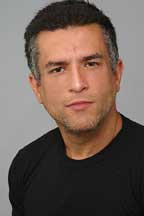

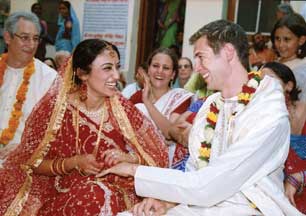

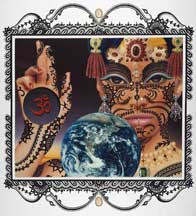
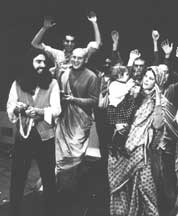
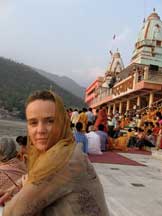
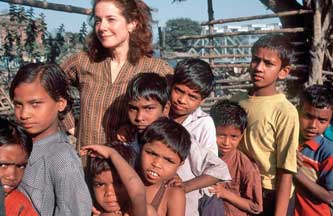

You must be logged in to post a comment Login